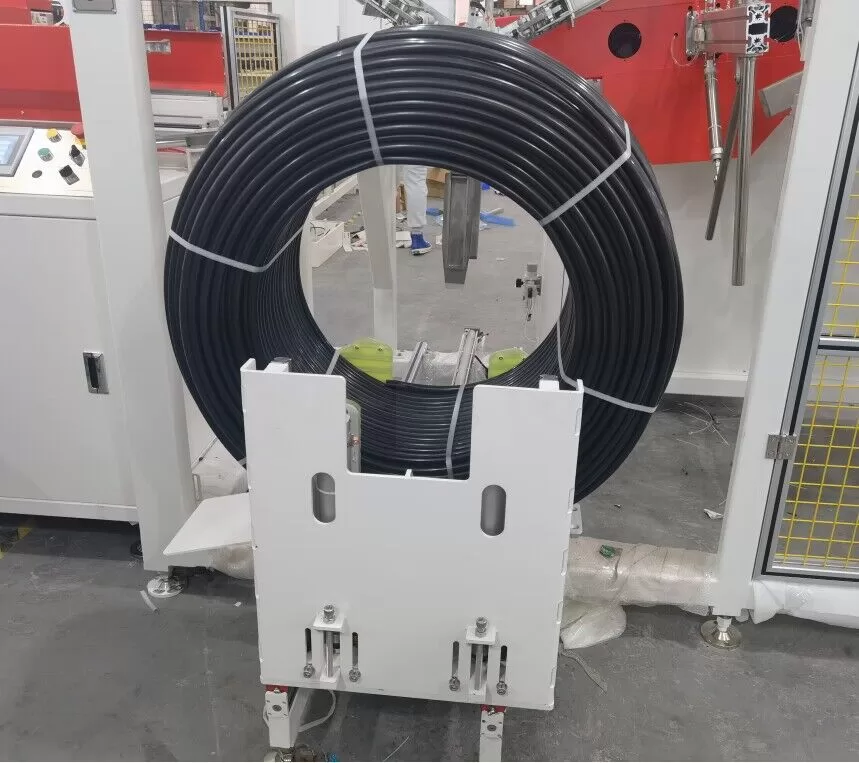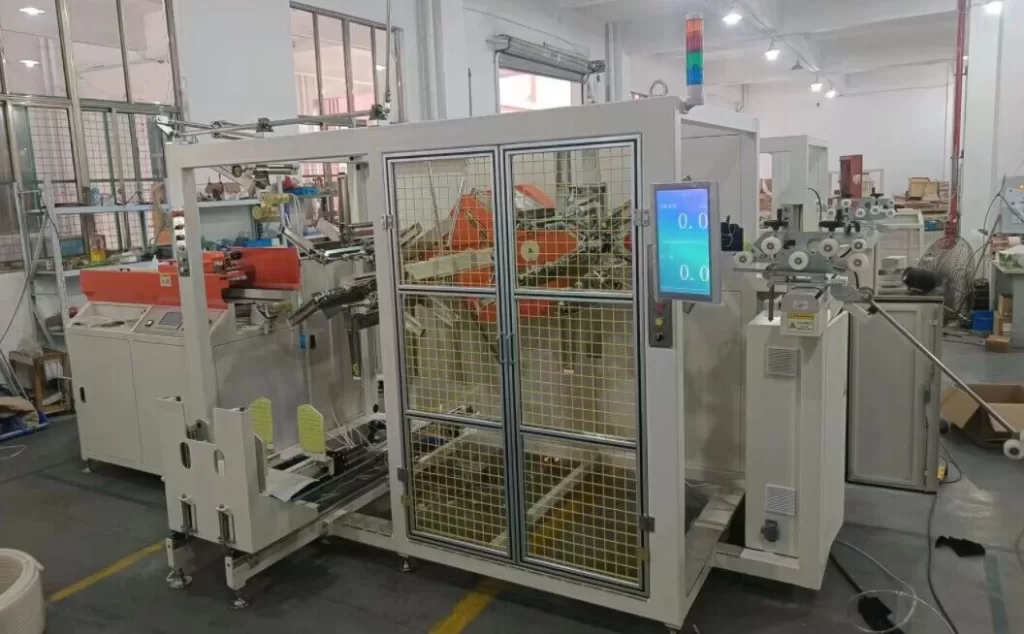A Comprehensive Guide to Industrial Coiling Machines: Operation, Types, and Applications
Coiling machines are fundamental pieces of equipment in numerous manufacturing and processing sectors, including metal fabrication, wire and cable production, paper converting, and plastics extrusion. Designed to wind materials like strip steel, wire, cable, paper, or plastic film into coils efficiently and safely, these machines play a critical role in material handling, storage, and preparation for subsequent processes. Understanding their operation, the different types available, and their specific applications is crucial for optimizing production workflows.
How Industrial Coiling Machines Work: Core Principles
At its heart, a coiling machine manages the controlled winding of a continuous length of material onto a core or mandrel. While designs vary significantly based on the application, most coiling systems share several core components and operational steps:
- Mandrel/Core Holder: This rotating component holds the core (if used) or forms the inner diameter of the coil directly. Mandrels can be collapsible for easy coil removal or solid, depending on the material and downstream handling needs.
- Guide System: This mechanism ensures the material feeds onto the mandrel smoothly and in the correct position. This can range from simple rollers to sophisticated edge guiding systems, crucial for creating tightly wound, straight-sided coils, especially with wide materials like metal strip or paper.
- Tensioning System: Maintaining consistent tension is vital for producing stable, high-quality coils. Too little tension results in loose, unstable coils, while too much can stretch or damage the material. Common methods include dancer arms, pneumatic brakes, or load cell feedback systems controlling motor torque.
- Drive System: Usually comprising electric motors (AC, DC, or servo) and gearboxes, the drive system provides the rotational force to the mandrel. Speed control is critical and often needs to synchronize with upstream processes (like an extruder or rolling mill).
- Control System: Modern coiling machines feature PLCs (Programmable Logic Controllers) or dedicated controllers to manage speed, tension, winding patterns, length/diameter measurement, and safety interlocks. Operator interfaces (HMIs) allow for parameter setting and process monitoring.

automatic pipe coiling machine, automatic hose coiling machine3
The Coiling Process:
- Material Feed: The material is fed from a previous process (e.g., slitter, extruder, rolling mill) or a payoff/decoiler.
- Threading: The leading end of the material is guided and secured to the mandrel or core.
- Winding: The machine starts, rotating the mandrel and pulling the material. The guide and tension systems ensure the material winds correctly.
- Pattern Control (Winding Types):
- Level/Precision Winding: Used primarily for wire, cable, or narrow strips, where each wrap is laid precisely next to the previous one, often traversing back and forth to create even layers. Essential for maximizing density and preventing tangling.
- Random/Scramble Winding: Simpler winding where the material path is less precisely controlled. Suitable for materials where pack density is less critical or for intermediate coiling steps.
- Step Winding: Layers are built up in defined steps, sometimes used for specific types of strip or tape.
- Completion: Once the desired length or diameter is reached, the machine stops, the material is cut, and the finished coil is secured and removed.
Key Types of Coiling Machines
Coiling machines are often categorized by the material they handle or their level of automation:
- Wire & Cable Coilers: Designed for round profiles, often featuring high speeds, precise length measurement, and integration with cutting and tying/wrapping systems.
- Strip & Sheet Coilers (Recoilers): Typically heavy-duty machines used in metal processing (steel, aluminum) after slitting or rolling. Must handle significant weight and manage high tension. Often includes features like edge guiding and coil car integration for removal.
- Paper & Film Coilers (Winders): Handle wide, thin webs. Tension control is critical to prevent wrinkles or tearing. Often integrated with slitting stations.
- Tube & Hose Coilers: Designed for flexible but often bulky materials, requiring careful guidance and tension management.
- Automation Levels:
- Manual: Operator controls most functions, including threading and coil removal.
- Semi-Automatic: Some functions automated (e.g., cutting, transfer), but operator intervention still required.
- Fully Automatic: Integrated systems that handle material feed, threading, coiling, cutting, strapping/wrapping, and coil removal with minimal operator input.
Applications Across Key Industries
The versatility of coiling machines makes them indispensable in various sectors:
- Metal Fabrication & Steel Service Centers: Coiling slit steel or aluminum strips (recoiling) after slitting lines. Coiling finished products like roll-formed profiles or tubes. Essential for handling heavy, high-value materials safely.
- Wire & Cable Manufacturing: Coiling finished wire and cable onto spools or into handleable coils for packaging and distribution. Precision winding is often critical.
- Paper & Film Converting: Winding large master rolls of paper or plastic film after production or slitting them into smaller rolls for packaging, printing, or other conversion processes.
- Plastics Extrusion: Coiling extruded profiles, tubing, or sheets as they exit the extrusion line. Speed synchronization with the extruder is key.
- Textile Industry: Winding fabrics, yarns, or nonwovens onto rolls for storage, transport, or further processing. Gentle handling and appropriate tension are important.
Benefits of Utilizing Modern Coiling Machines
Investing in appropriate coiling technology offers significant advantages:
- Increased Efficiency: Automated or semi-automated coiling significantly speeds up material handling compared to manual methods.
- Improved Product Quality: Consistent tension control and precise winding patterns result in stable, uniform coils that are easier to handle and process downstream. Reduces material damage like stretching or edge defects.
- Enhanced Worker Safety: Minimizes manual handling of potentially heavy or awkward materials, reducing risks of strains, cuts, or other injuries. Proper guarding is essential.
- Reduced Material Waste: Accurate length/diameter control and clean cuts minimize scrap.
- Labor Savings: Automation reduces the need for direct operator involvement in the winding process.
- Better Space Utilization: Tightly wound, uniform coils are more compact and stable for storage.
Factors to Consider When Selecting a Coiling Machine
Choosing the right coiling machine requires careful consideration of several factors:
- Material Properties: Type (metal, plastic, paper, wire), dimensions (width, thickness, diameter), flexibility, surface sensitivity.
- Coil Specifications: Required inner diameter (ID), maximum outer diameter (OD), maximum width, maximum weight.
- Line Speed & Throughput: Required production rate (e.g., feet per minute, coils per hour) must match upstream and downstream equipment.
- Tension Requirements: Range and precision of tension control needed for the specific material.
- Winding Pattern: Is simple coiling sufficient, or is precision level winding required?
- Automation Needs: Level of automation desired for feeding, cutting, tying, and unloading.
- Integration: Compatibility with existing production lines (communication, physical layout).
- Safety Features: Emergency stops, guarding, interlocks. Compliance with standards like OSHA guidelines on machine guarding is crucial.
- Budget and ROI: Initial cost versus long-term savings in labor, efficiency, and material quality.
Maintenance and Safety Best Practices
To ensure longevity and safe operation:
- Regular Maintenance: Follow manufacturer recommendations for lubrication, inspection of wear parts (belts, rollers, cutters), sensor checks, and calibration.
- Cleaning: Keep the machine free of debris and material scraps that could interfere with operation.
- Operator Training: Ensure personnel are properly trained on operation, setup, safety procedures, and emergency protocols.
- Safety Guarding: Never operate the machine with guards removed or safety interlocks bypassed. Be aware of pinch points and rotating components.
- Proper Loading/Unloading: Use appropriate coil handling equipment (coil cars, overhead cranes) for heavy coils.

automatic pipe coiling machine, automatic hose coiling machine1 Conclusion
Coiling machines are more than just end-of-line equipment; they are integral components of efficient and safe manufacturing processes. By understanding the principles of operation, recognizing the different types available, and carefully selecting a machine based on specific application requirements, manufacturers can significantly improve material handling, product quality, and overall productivity. Regular maintenance and a strong emphasis on safety are key to maximizing the return on investment and ensuring reliable performance for years to come.
